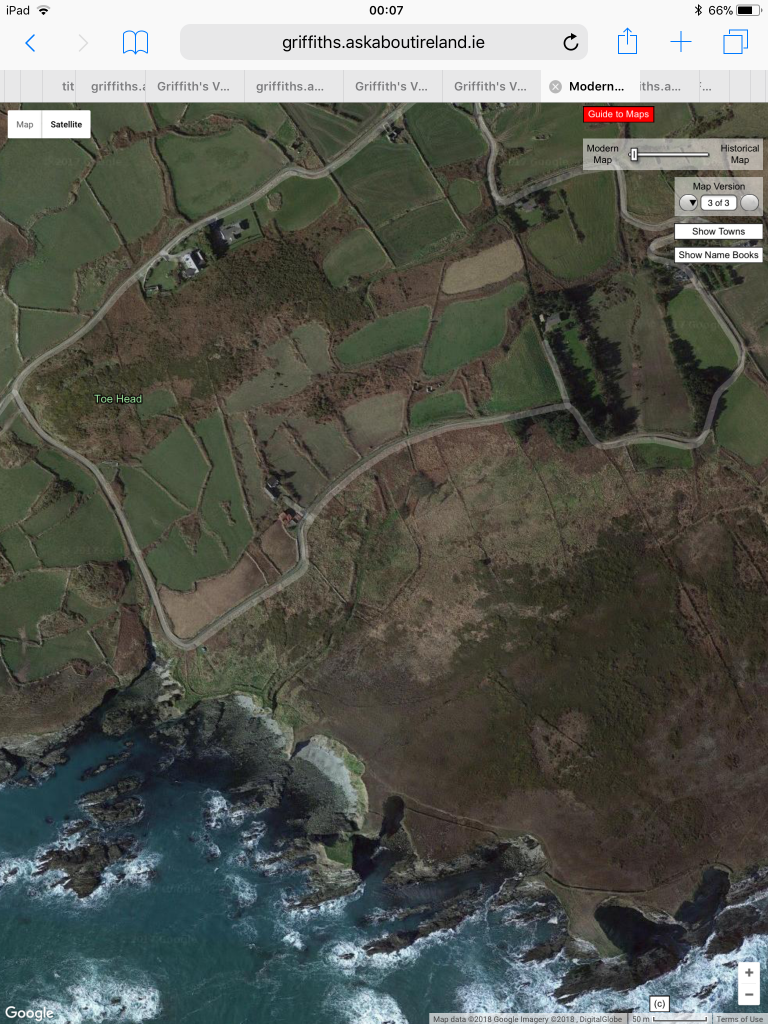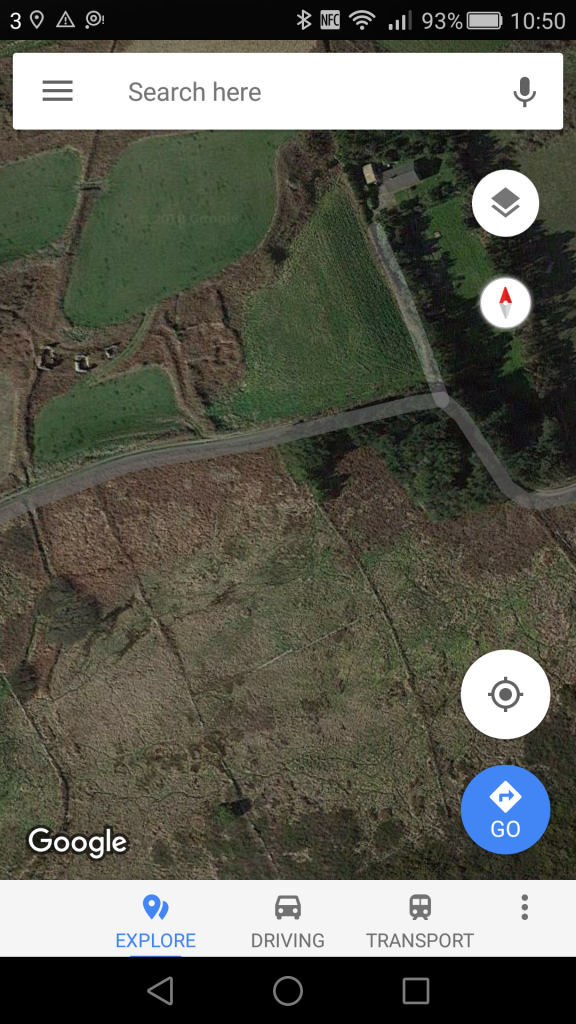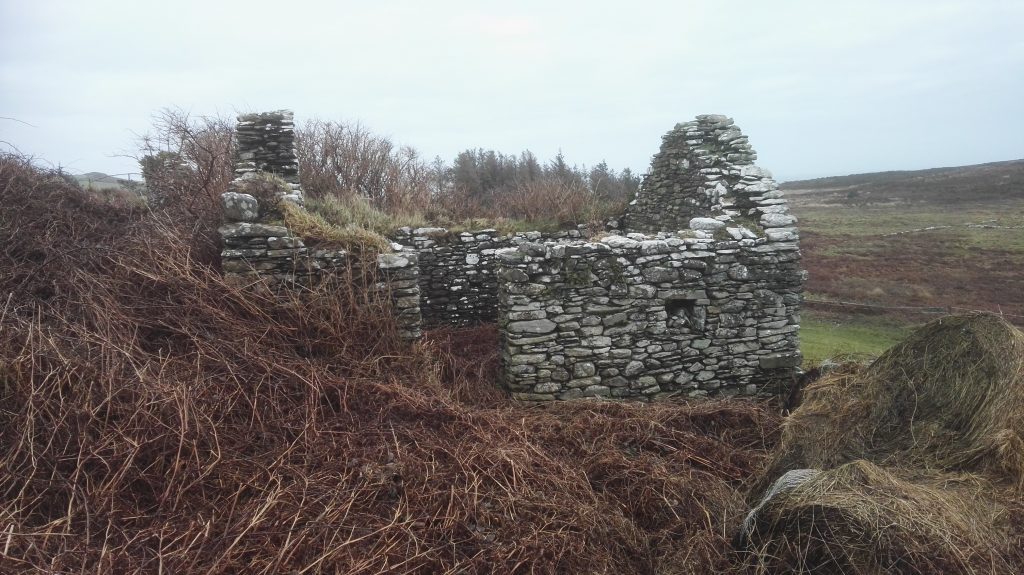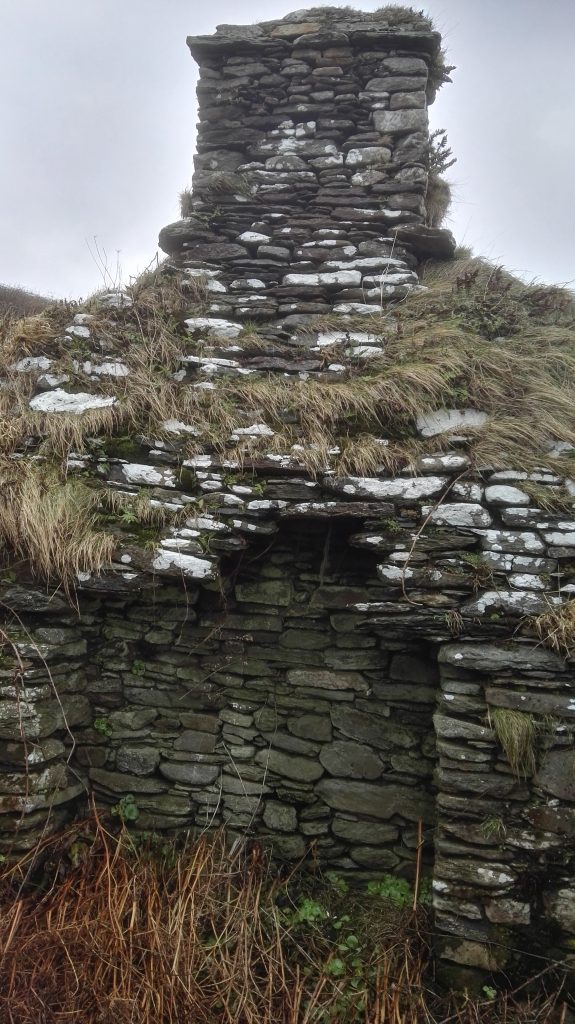

Cornelius Sexton (G3) c.1800-1876 was the son of Timothy Sexton and appears to have occupied half of Lot 11 on Toehead. It is almost certain that Cornelius lived the latter part of his life (from about 1864) in one of the ruined cottages that still stands on this land today – (a picture of these houses adorns the home page of this website). The other house was occupied by his brother, Patrick (G3, 1805-1899), the great grandfather of the John Sexton (G6, b. 1951) who still lives on Toehead today. Between them (Cornelius and Patrick), they had just less than sixteen acres of land, leased from Thomas Somerville (and later from Philip J. Attridge, a middleman). Of the sixteen acres, just over nine were regular land with the other seven acres made up of a share of the poor quality Lot 16 commonage. While the ruined houses appear very old, we know that they, in fact, date from the post-famine era as they do not appear on the first OS maps which were drawn in the early 1840s. Prior to the building of these houses, we must presume that Cornelius (G3) and all the other Toehead Sextons lived in the clachan of houses that was located a few hundred metres over the hill immediately to the north (in the vicinity of the house in which John Sexton (G6) lives today). We know that Cornelius (G3)also leased land in Gortacrossig (though possibly never lived there) and was married to Margaret (Peg) Hegarty who died in 1844 [this needs to be checked]. They had at least one son, James (G4), who was born on the 26th October 1844. It is not known whether James grew into adulthood as there appears to be no further records relating to him. It is unlikely that James (G4) was the first born son. More likely, he was the second born and was named after his maternal grandfather. He almost certainly had an older brother, Timothy (G4), who would have been called after his paternal grandfather, Timothy Sexton (G2). Unfortunately, we have no record of Timothy (G4) so we have no way of knowing whether he died in infancy, died as a child during the famine or emigrated in the early 1860s.

With James (G4), the trail of this branch goes cold so, unless evidence to the contrary comes to light, we will have to assume that this Sexton family came to an end with the deaths of sons, Timothy (G4) and James (G4), and of their father, Cornelius (G3), in 1876. On his death, Cornelius’s half of Lot 11 passed on to his nephew, Bartholomew Sexton (G4, 1829-1912), son of his late brother, John (G3, 1795-1847) of Scobaun. Bartholomew subsequently passed on his share (Lot AaBCD) to his son, Michael (G5, 1854-??). The land was finally purchased in 1914 from Attridge under the Land Purchase Act. While Michael and Mary had at least five children (Batt b. 1888, Patrick b. 1889, Nora/Hanora b. 1895, Bridget b. 1896, and Kate b. 1903 – all G6), the land did not pass on to either of the two sons. It is not known whether this was because they died young or because they had emigrated. Michael’s widow, Mary (nee Hurley), subsequently died in 1948 and, in 1950, the land (Lot AaBCD) was acquired by their eldest daughter Honora (aka Nora, G6, b.1895, married name, McCarthy) in 1950 who in turn sold it on to Richard Buckley in 1958. It is presumed that the land passed outside the family in this way as Michael’s younger brothers, Cornelius (G5, 1856-1873) and John (G5, 1866-1919) were both already deceased and appear to have left no heirs. By this time, the house on the land was already in ruins. Nora/Hanora (G6) did have children but as she had emigrated to London and later to Boston where she married Thomas McCarthy (McCarthy ‘Souney’), she presumably had no intention of returning to live in Ireland and, therefore, sold the land. Nora had three children – Tom, John and Mary McCarthy. Mary McCarthy (married name Fleming) did return from Boston to her mother’s homeplace in about 1976 when she visited with her children Michael and Elizabeth Fleming.
